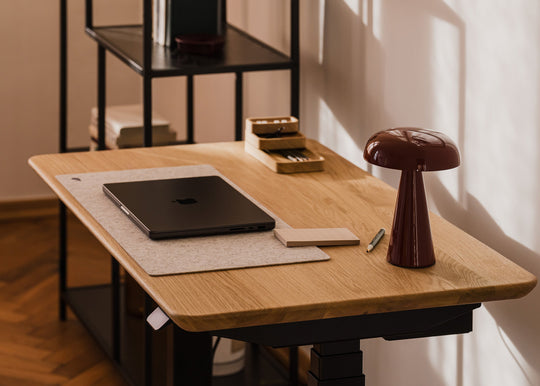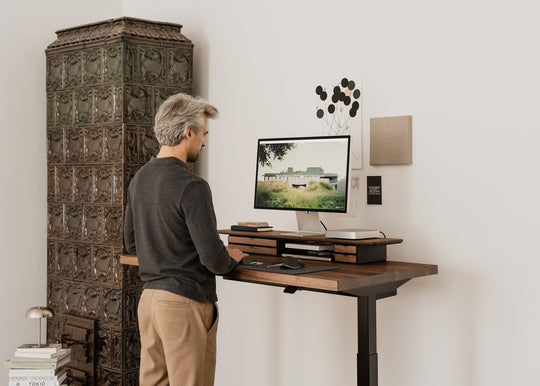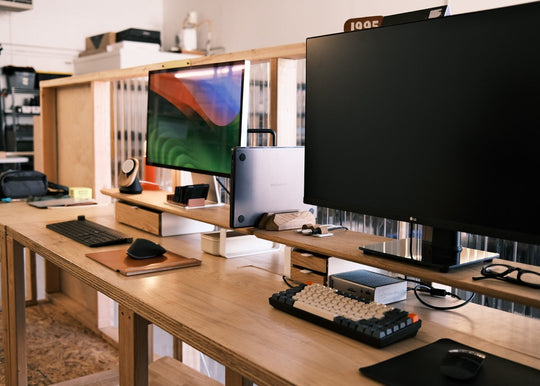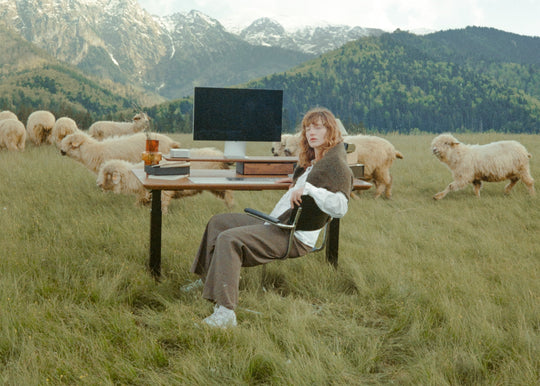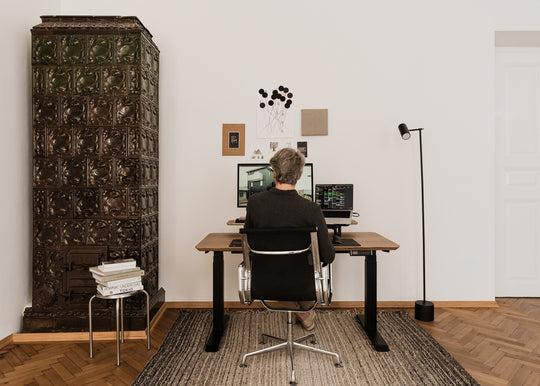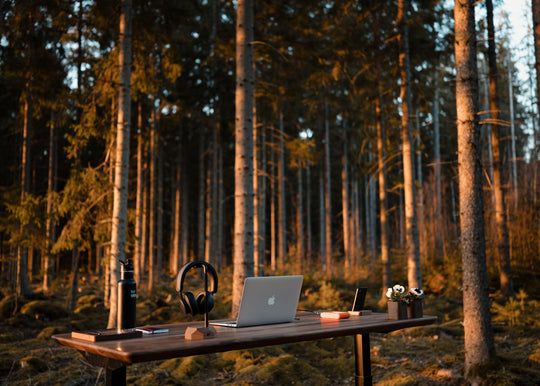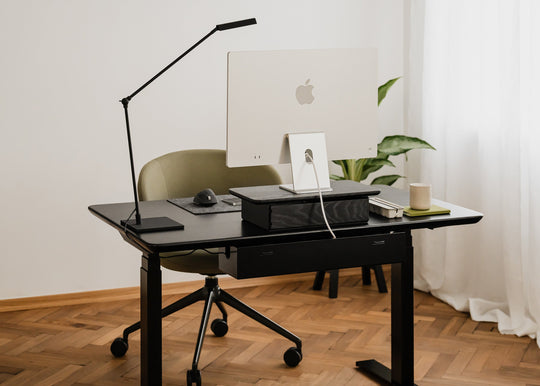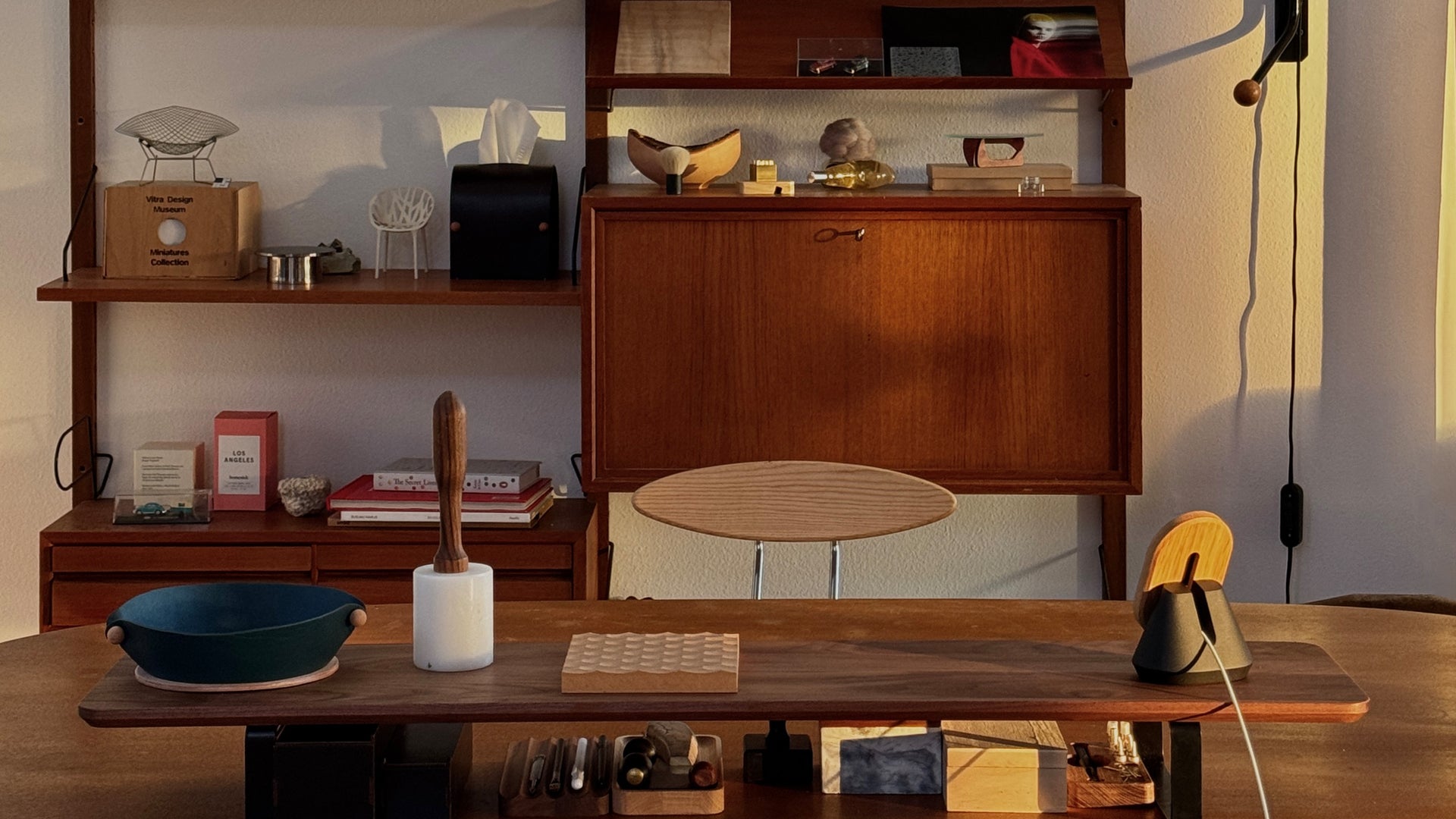
Your space, your story: Hyejin
Meet Hyejin from @ambiencecase, an influential designer based in Portland. Her home embodies a harmonious blend of mid-century modern aesthetics and a meticulous selection of natural materials. Each corner of her space is a carefully curated masterpiece, reflecting a thoughtful approach to design and a passion for creating environments that resonate with both functionality and beauty. Join us as we embark on a journey into the design realm with Hyejin, discovering the inspiration behind her stunning creations and the principles guiding her stylish workspace.

When did your adventure in design and interior architecture begin, and what is your background in the industry? Was it your passion that ultimately became your recipe for life?
I majored in industrial design in college. I used to work as a designer in the Color, Material, Finishes department for automotive exterior and interior for about a decade. Cars are large products and small spaces that people potentially use for more than 10 years. Therefore, influences on premium materials and perennial colors heavily came from timeless designs. Over many research trips and material development experiences, I was able to experience furniture pieces in person that I had only read and learned about during school. My interest grew and deepened by reading books about architects and designers out of curiosity. Naturally, my tastes and preferences accumulated in the spaces I live in.
Do you follow a specific routine in your daily work? How do you organize your workday, and what helps you maintain a healthy work-life balance?
Starting my own brand and working from home made routines even more important. I wake up, have a glass of water, tidy up the bed, and write a brief journal entry with a calm mind in the morning. Then, I focus on work and tasks according to my schedule. On days when I make product samples for my brand, I dedicate the whole day to crafting and sampling work. Recently I've come to realize the importance of health, so I try to cook simple meals with fresh ingredients. After meals, I tidy up the backyard or take a neighborhood walk to enjoy the outdoors, which greatly helps me finish my work effectively. Since the Portland area often has rainy or cloudy weather, which can easily lead to a gloomy mood, I always play uplifting music on dark and cloudy days to maintain a positive atmosphere. I'm also interested in scents, I burn pleasant incense fragrances according to the weather or my mood.
What tips do you have for creating a functional and stylish workspace? Are there specific elements or principles you always consider?
It's very much my personal preference, but I prefer to complete the interior with just the right furniture, lighting, and decor arrangement based on my taste. In spaces where bold furniture are placed, I tend to keep the walls and surrounding areas as clear as possible, prioritizing the main furniture, followed by secondary pieces, and then smaller decorative items to create a harmonious overall look. When bringing in new furniture, I carefully select styles that complement the tone and manner of the existing pieces in our home. Prioritizing visual inspiration, I opt for furniture that satisfies both aesthetic and function. Collecting small objects is a hobby of mine, so I enjoy decorating with souvenirs from travels, car die-casts, or design miniatures, creating a quaint gallery or curated shop-like atmosphere throughout the space.
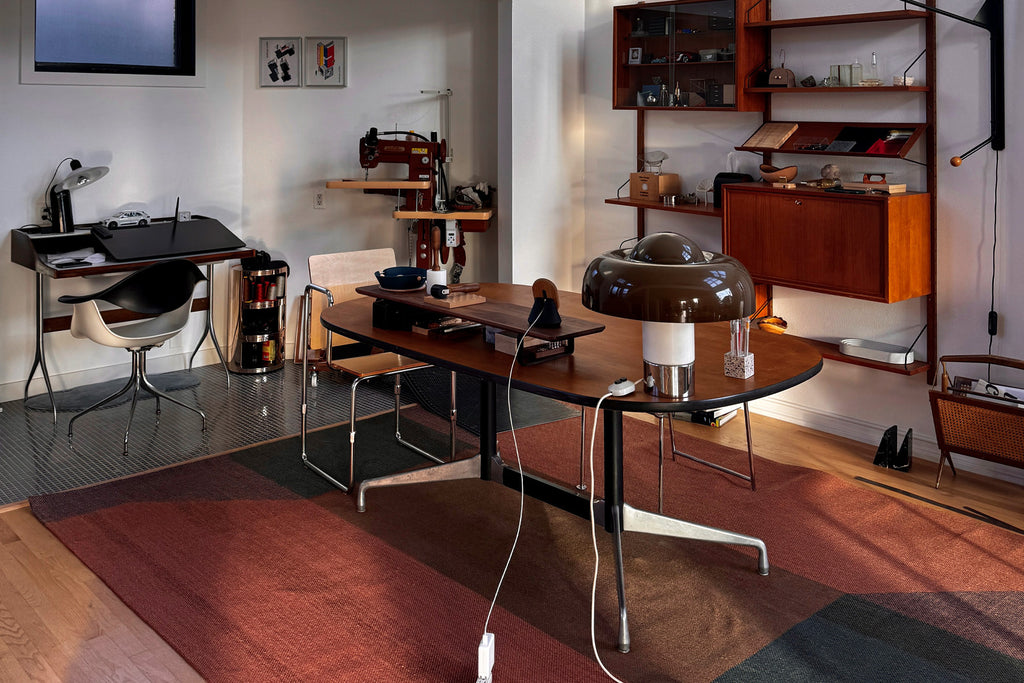
What are your favorite materials to work with in your designs? Are there any particular textures, colors, or finishes that you find yourself drawn to?
I don't have a specific favorite material to work with, but I often use various wood tones, natural browns, black, and white as base colors in my designs. I prefer wood and metal over plastic for hard materials and leather over fabric for soft materials. Since I easily tire of vivid colors, I avoid flashy shades when selecting furniture. I only use vibrant colors sparingly, as accents throughout by hanging posters or decorative items.
Can you share the inspiration behind creating a mid-century style space? Has this aesthetic always been your preference, or has your style evolved over the years?
While studying industrial design in college and working as a professional, my taste gradually changed. I had a vague interest in timeless designs even as a student. In my twenties, I liked modern and kitschy things, but as I entered my thirties and started living with my partner, my interest shifted towards products and furniture that could be used for a long time, leading me to appreciate perennial designs and styles loved for generations.
Among the elements of the mid-century style, which ones do you find the most admirable and enjoy incorporating into your designs?
The most admirable aspect of mid-century style is its timelessness and practicality. The furniture often has a structural and architectural quality, combining aesthetics with functionality. Many mid-century furniture pieces look uncomfortable at first glance but turn out to be very convenient upon use. The sturdy construction and careful selection of materials are crucial. Therefore, my brand's products reflect these aspects by using durable materials like genuine leather, metal, and wood, combined with functional and solid designs.
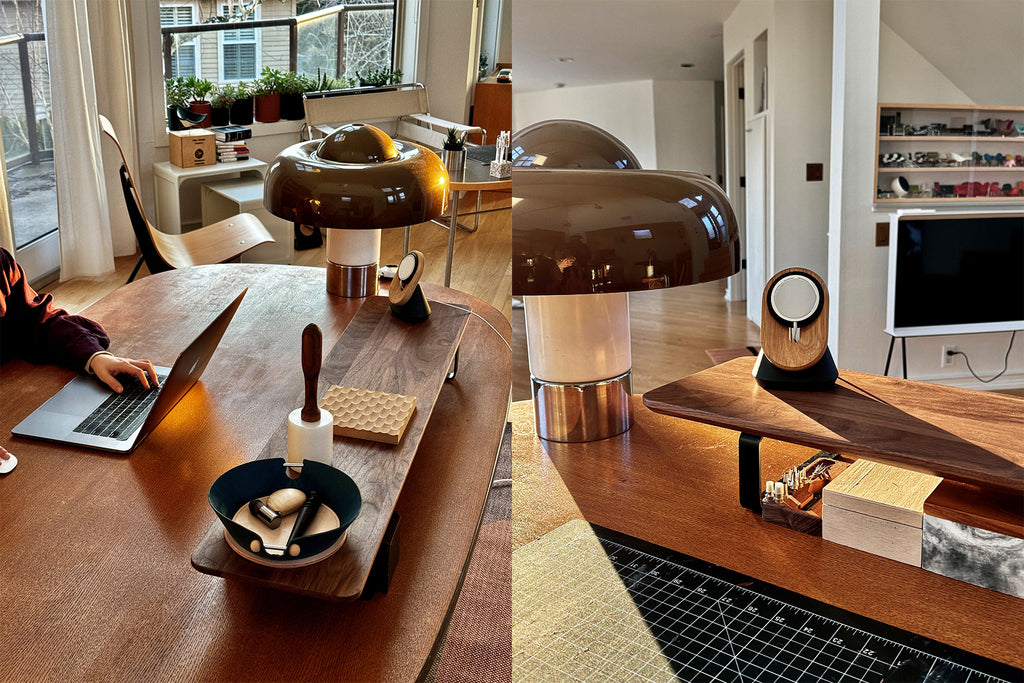
Is the design of your space considered complete, or is it an ongoing process? Where do you source your period furniture and accessories?
I believe spaces and objects are never truly complete or perfect but rather constantly evolving. My current living space could change at any time, reflecting my evolving tastes and needs. I make small changes or rearrange furniture when I feel dissatisfied or bored with certain aspects of the space. Even the furniture I'm attached to may be passed on to others or replaced with different pieces over time. I source furniture primarily from local mid-century vintage dealers, as well as online platforms like eBay, Etsy, and 1stdibs. While I prefer to see and touch items in person before purchasing, I carefully research and communicate with sellers when buying rare or desired designs online.
Your space is available for hire to host and execute art projects. Which industry is most likely to leverage the venue’s potential and why? Can you tell us what campaigns has your space been involved in?
Our home spaces are utilized for purposes such as mood photoshoots for furniture and interior products, fashion brand photoshoots, small-scale music video shoots, local commercial ads, interviews, and more. Some people even make short-term reservations to visit and see the furniture I own in person. Last year, we hosted interviews about Nike‘s new shoe designs throughout our home.
In what ways do Oakywood products help you increase your productivity?
My brand's products are primarily made of leather all by hand, and I personally handle the product sampling. While not on a professional workshop scale, I utilize various leather crafting tools and often find my desk cluttered during work. To avoid the inconvenience of constantly storing and retrieving tools from drawers, I prefer to keep many of them on my desk, neatly organized with Oakywood wooden trays and Desk Shelf. The trays fit snugly under the desk shelf, providing convenient storage, while the shelf itself offers space to place larger tools or a laptop. The MagSafe iPhone Stand comes in handy for charging my phone and listening to music while I work. The natural material and design of the wooden desk and tools complement each other seamlessly, and a well-ordered desk naturally enhances focus and efficiency during work.
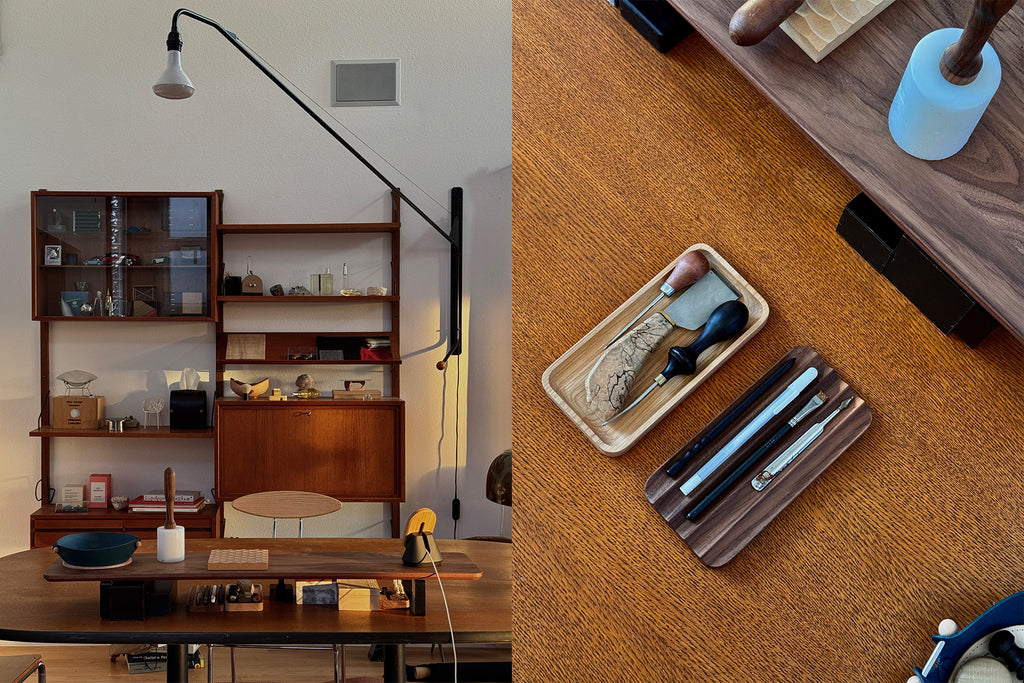
How do you perceive the connection between a beautiful and tidy space and increased productivity? Have you noticed such a correlation in accomplishing your tasks?
I believe there is a deep correlation between a beautiful and organized space and productivity, I consider cultivating a beautiful space and keeping it tidy to be extremely important. The feeling and mindset when starting work on a cluttered desk with tools and materials piled up haphazardly are very different from when working on a clean and organized desk where everything is in its proper place. Surrounding clutter easily distracts and gives a sense of having to juggle multiple tasks simultaneously. On a tidy desk, it feels like I can calmly tackle each task one by one. Due to the nature of my work, my workbench tends to get messy very quickly, I always make sure to tidy up before going to bed after finishing work. Otherwise, the messy atmosphere tends to linger until the next day, affecting efficiency. The refreshing and good feeling after cleaning and tidying up is just a bonus. Beautifying and arranging a space provides natural aesthetic inspiration for work and life. Creating a comfortable and attractive space feels like treating myself well. That's why I prioritize spending big portions of my budget on furniture and items I use in my daily life at home.
Given the current trends and concerns about climate change, do you believe there's a shift in the design industry towards more sustainable and environmentally conscious practices? How do you navigate these aspects in your work?
In today's era, most industries, including design, face challenges regarding climate change. While capitalism often drives industries to prioritize profit and consumption, ultimately leading to overproduction and overconsumption, I believe it's essential to strive for more sustainable practices. In my work, I aim to create products with durable designs using natural materials, even if they may be more costly. I also minimize packaging and opt for biodegradable materials whenever possible. While this approach may not immediately lead to significant business success or wealth, I stay true to my values regarding the environment and consumption culture.
When faced with creative blocks or challenges in your projects, what methods do you use to overcome them and find new inspiration?
When I encounter creative blocks or challenges in my projects, I boldly step away from work and engage in activities I've been wanting to do but haven't had the time for. I take short trips to different cities, visit local art exhibitions, go window shopping at nearby boutique shops, and meet up with friends to enjoy good food and conversation. I also tackle tasks I've been putting off, like cleaning and organizing my storage. Initially, I used to feel guilty and anxious about spending unproductive time, but indulging in activities I enjoy naturally recharges me with energy and inspiration, often leading to new ideas for my work.
